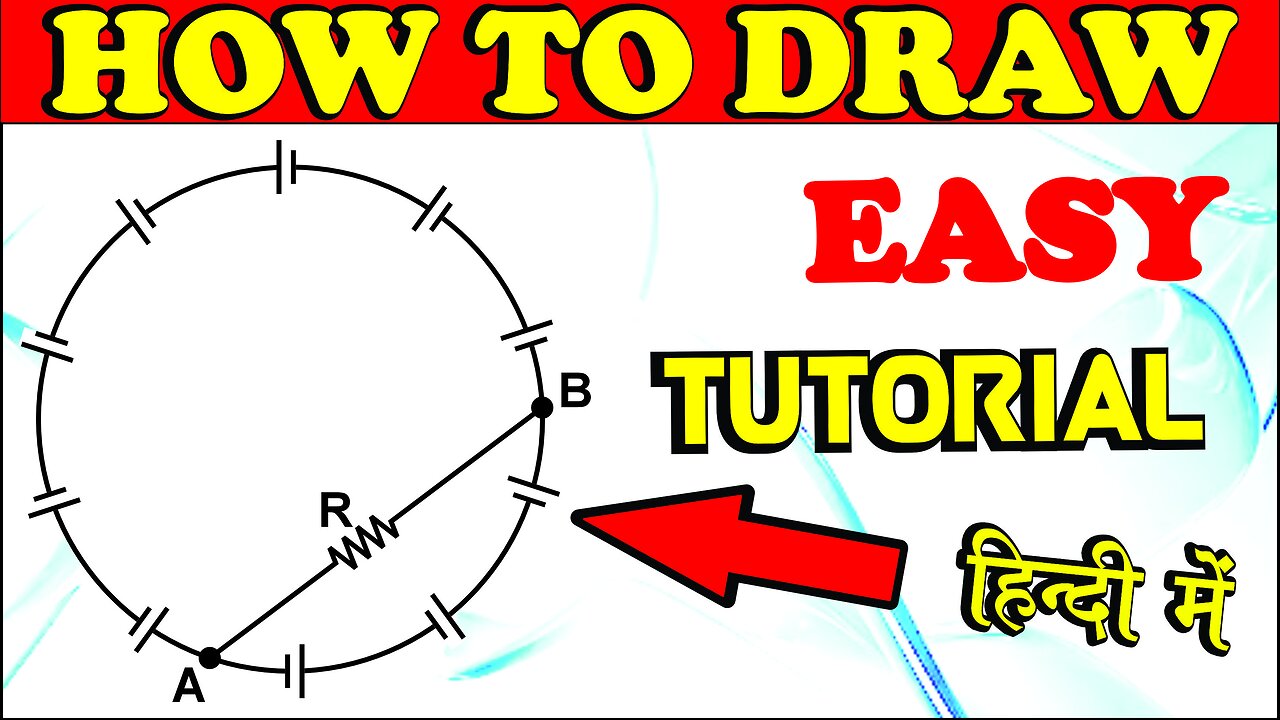Premium Only Content

Each cell has emf e and internal resistance r in figure. By Seekh Raha Hoon
Each cell has emf e and internal resistance r in figure. Find the current through resistance R.
Each cell has emf e and internal resistance r in figure. Find the current through resistance R. How to Draw Diagram in Corel Draw By Seekh Raha Hoon
If each cell in the figure has an emf of "e" and an internal resistance of "r", then the total emf of the circuit would be the sum of all individual cell emfs (ne), and the total internal resistance would be the sum of all individual cell internal resistances (nr), where "n" is the number of cells connected in series.
The current through resistance R is I = e / (R + 2r).
Explanation:
Equivalent circuit:
Since the two cells are connected in series, their emfs add up, and their internal resistances also add up, resulting in a single equivalent cell with emf 2e and internal resistance 2r.
Applying Ohm's Law:
To find the current through resistance R, use the formula I = V / R, where V is the potential difference across R. In this case, V = 2e - (current * 2r) since the voltage drop across the internal resistance is also considered.
When calculating the total resistance in a series circuit, simply add the individual resistances.
The emf of a cell is the potential difference across its terminals when no current is flowing.
Internal resistance is the resistance within a cell that opposes the flow of current.
Related Query
The resistance of hexagon circuit between A and B represented in figure is
In the circuit of figure potential difference across E1 and E2 will be
In the circuit shown terminal potential difference across cell of emf 7 V is
In the figure shown current through BC is
A cell of e.m.f. e and internal resistance r sends a current of 1 A
A variable resistor R is connected across a cell of emf E and internal resistance r
Two cells, each of emf E and internal resistance r are connected in parallel
-
 52:23
52:23
MattMorseTV
3 hours ago $12.72 earned🔴The Cartels are SCREWED.🔴
79.4K85 -
 LIVE
LIVE
Badlands Media
17 hours agoAltered State S3 Ep. 44
2,187 watching -
 21:09
21:09
Bearing
14 hours agoAustralian “Racist” Protest EXPLODES 💥 Glowies, Brawls & Media Spin 📣
4.59K20 -
 LIVE
LIVE
Tundra Tactical
2 hours ago $0.41 earnedTwo Vets, One Ouija Board, Zero Good Decisions
82 watching -
 3:49:59
3:49:59
Barry Cunningham
7 hours agoPAM BONDI & KRISTI NOEM HOST A PRESS CONFERENCE AND JOHN RICH JOINS THE SHOW!
27.8K18 -
 LIVE
LIVE
GrimmHollywood
11 hours ago🔴LIVE • GRIMM HOLLYWOOD • RETRO PS2 GAMES • GRIMMDY GAMES • BRRRAP PACK x FINALS RANKED GRIND
125 watching -
 LIVE
LIVE
Cripiechuccles
8 hours ago😁18+💚💙WEEDIE WED WITH CRIPIE💚RUMLUV💙👌SMOKING, GAMING & WATCHING FLICKS!:😁
22 watching -
 1:01:50
1:01:50
BonginoReport
5 hours agoSeason 2 Of The Epstein Show Just Dropped - Nightly Scroll w/ Hayley Caronia (Ep.126) - 09/03/2025
91.5K34 -
 LIVE
LIVE
Spartan
5 hours agoScrims then Ranked and/or E33 (New Game+ / All Enemies 10x Health)
42 watching -
 1:01:42
1:01:42
The Nick DiPaolo Show Channel
6 hours agoUS Vaporizes Venezuelan Drug Boat | The Nick Di Paolo Show #1787
69.9K36